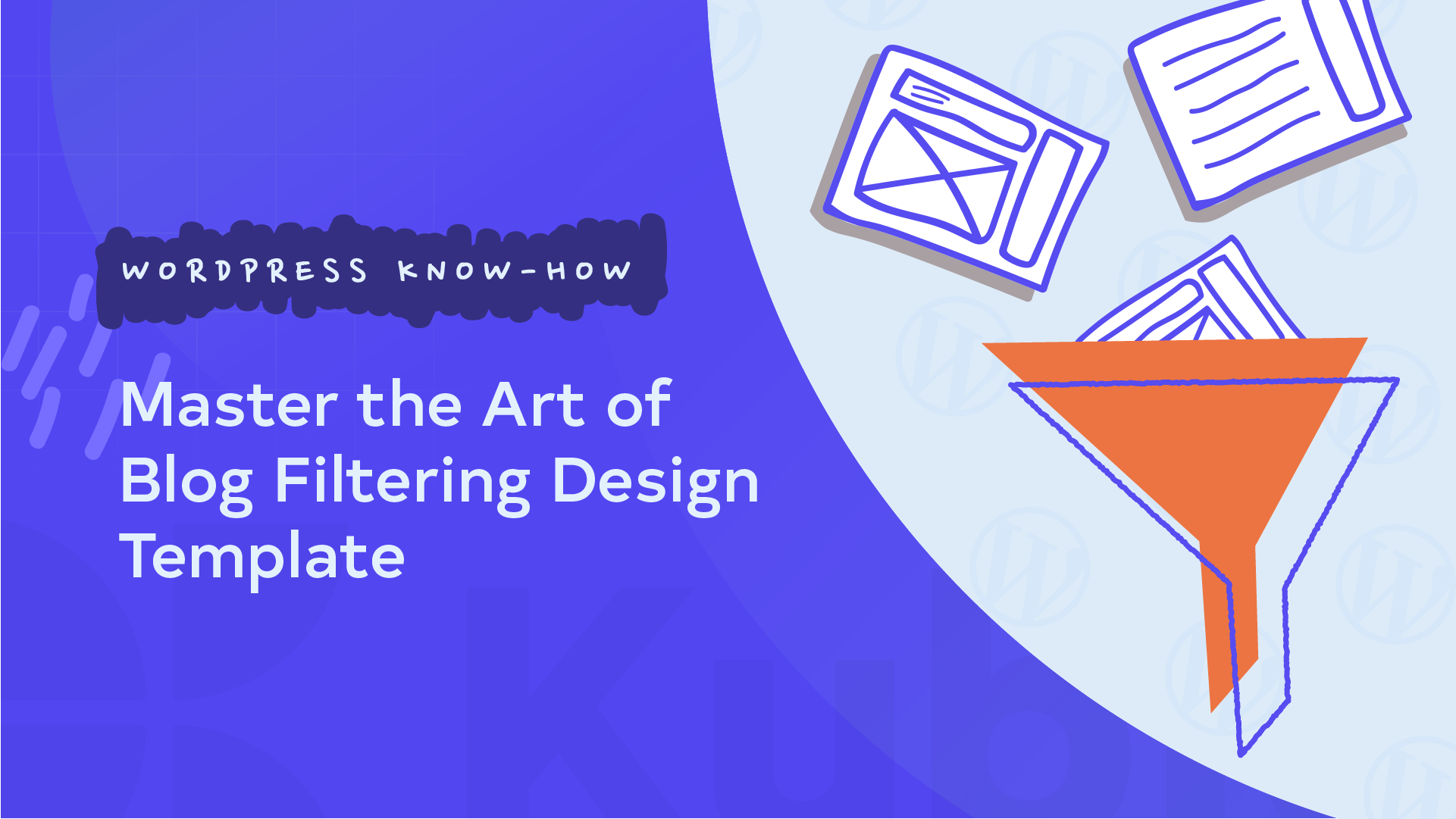With a successful blog comes a lot of content, which can make navigation a bit tricky. Thankfully, there is a solution: creating your own customized filtering system.
While WordPress does not offer a built-in, straightforward method for creating blog filters, it’s essential to recognize the platform’s existing capabilities, including its taxonomy system and plugins. Users can design their filters within WordPress. Plugins like Kubio further enhance and simplify this process, providing additional features and improvements for a more streamlined experience.
In this blog post, we will show you how to create blog filtering design templates so your audience can quickly find the articles that are most relevant to them.
Effectively using blog categories
Using blog categories effectively can enhance the user experience of your website. If you haven’t already set up categories for your blog, it’s important to do so before implementing category-based filters. Even if you already have categories in place, taking the time to reconsider and optimize them could unlock the true potential of your blog’s organization.
Creating a well-organized blog with carefully categorized content helps users looking for specific information. As well as being convenient, it plays a vital role in boosting your site’s SEO. Search engines, like Google, love when they can easily understand the structure of your content, as it helps them recommend and rank your blog higher in search results.
? To help you out, here are a few tips for creating effective content categories:
Tip 1: Really get to know your audience
Take the time to understand what your audience wants. Look at popular posts to get an idea of the topics that your readers are interested in. Make sure your categories provide clear answers to the question, Where can I find X?
Tip 2: Keep everything clear and simple
Create categories that are easy to understand and distinguish from one another. Instead of using vague labels like “Meals” and “Cooking”, go for more specific and descriptive categories like “Recipes” and “Culinary Techniques”. This will prevent any confusion and improve the user experience.
Tip 3: Use sub categories for organization
If needed, use sub-categories to create a hierarchy within your categories. For example, you can have a main category called “Recipes” and then have sub-categories like “Meals”, “Beverages”, and “Snacks”. This will help users navigate your blog more easily and also benefit your SEO efforts.
Tip 4: Don’t forget about SEO
When creating your categories, consider incorporating relevant keywords that are related to your content. This will not only help search engines understand your blog better but also attract users who are actively searching for specific topics.
Tip 5: Find the right balance
While there is no prescribed rule for determining the perfect number of categories, aiming for a range of three to ten is generally considered effective. This is rooted in the balance between providing sufficient organizational structure and preventing information overload.
Ideally, keeping the number of categories to five or fewer is encouraged. This approach ensures clarity, facilitating easier navigation for your audience and preventing the risk of overwhelming them with various choices.
By maintaining a concise and focused set of categories, you enhance the user experience and make it more likely that visitors can quickly find and access the content they are looking for.
Tip 6: Keep evolving and learning
Your blog and your audience’s needs will change over time, so it’s important to regularly review and revise your categories. Make adjustments as necessary to align with the evolving content and meet the expectations of your audience.
Creating a filterable blog with Kubio
When it comes to website creation, Kubio is a popular, versatile, and user-friendly page builder for WordPress. Kubio’s drag-and-drop interface and built-in responsive design make it great for crafting visually stunning and functional websites with minimal effort.
Kubio offers an AI page generation feature that speeds up the creation of attractive starter sites and pages. With the builder, you can easily redesign your entire WordPress site using a single interface. The ease of use in Kubio stems from pre-designed blocks and sections that streamline the design process.
To maximize Kubio’s capabilities for an efficient and organized blog, you can integrate a filterable system using the “posts list” block. This feature allows you to categorize your blog posts to give visitors a smooth browsing experience tailored to their interests.
Here’s a tutorial on creating a filterable blog with Kubio:
- Categorize your blog posts
- Before diving into the Kubio builder, ensure all your blog posts are appropriately categorized. If you’re unsure where to start, consider defining categories that align with the core themes of your content.
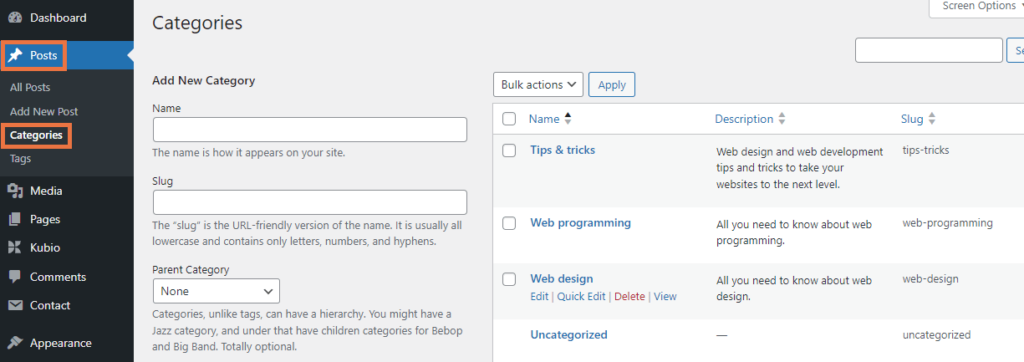
- Go to your blog page
- Within the Kubio builder, head to your site’s blog page using the hamburger menu.
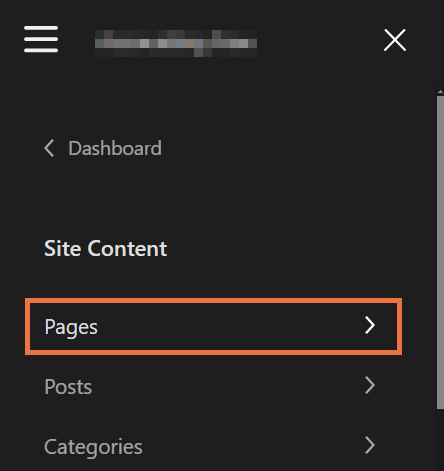
Opening the website’s pages in Kubio’s editor.
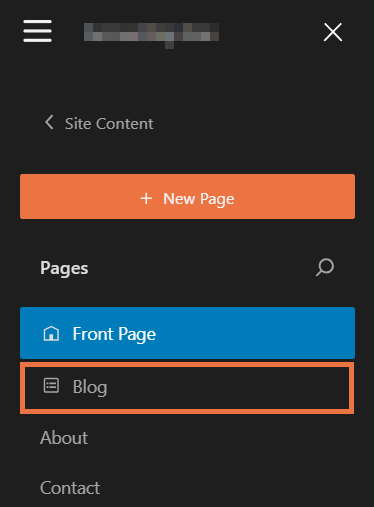

- Create a filter section
- Above your blog posts, generate a new section and give it a descriptive header, such as “Browse by Topic”. You can do this by clicking on the header section and choosing Add section after from the options.
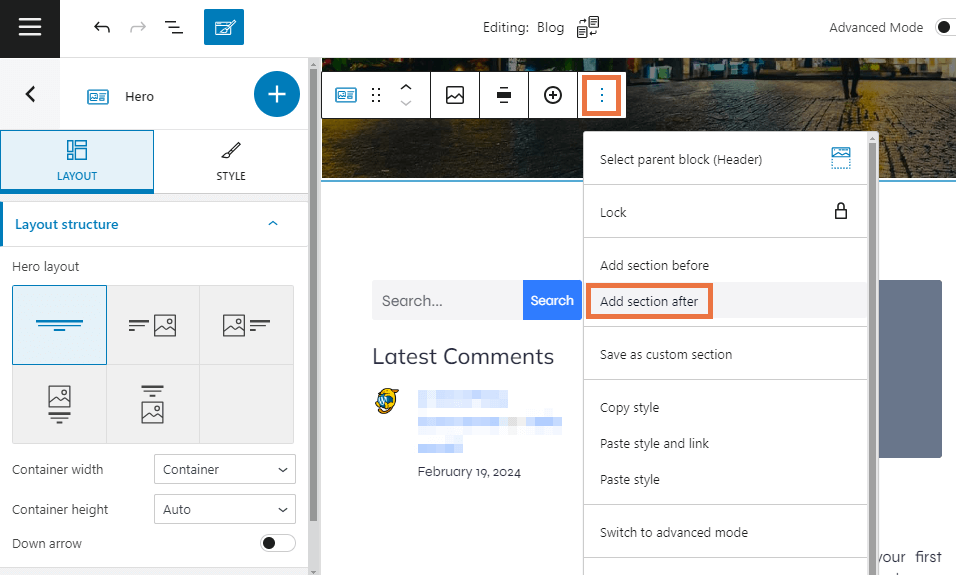
- Or you can choose one of Kubio’s many section templates.

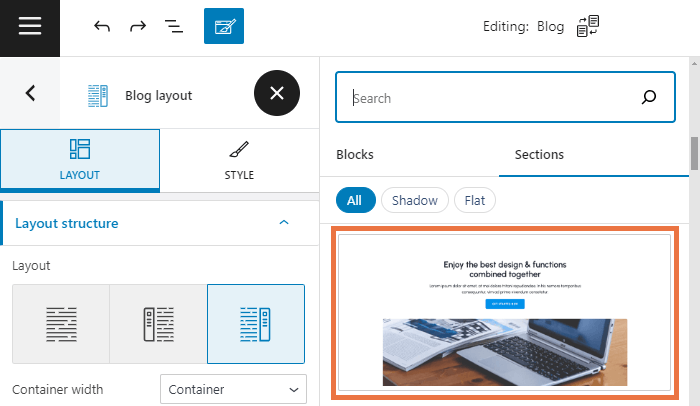
- Add blog categories
To create blog category buttons within Kubio and optimize the filtering process, follow these steps:
- Look for the option to add buttons or links within the section. Click on this option to create new buttons.
- For each button, label it with the name of one of your blog’s categories. This labeling is important for users to easily identify and select the desired category for filtering.
- Depending on Kubio’s features, you may encounter specific settings or options for each button. Explore these settings to configure additional aspects. For example, you might customize colors for individual buttons to enhance visual clarity or set up direct links to corresponding category archive pages.
- Save your changes.
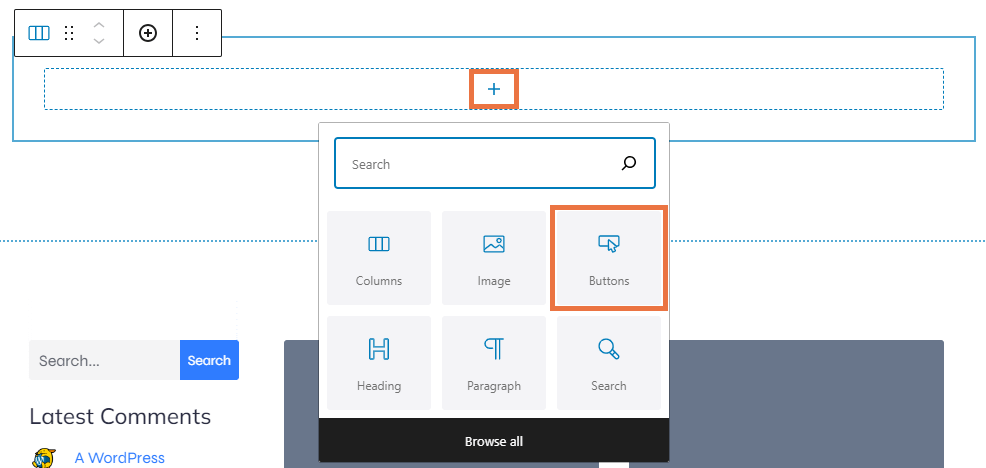
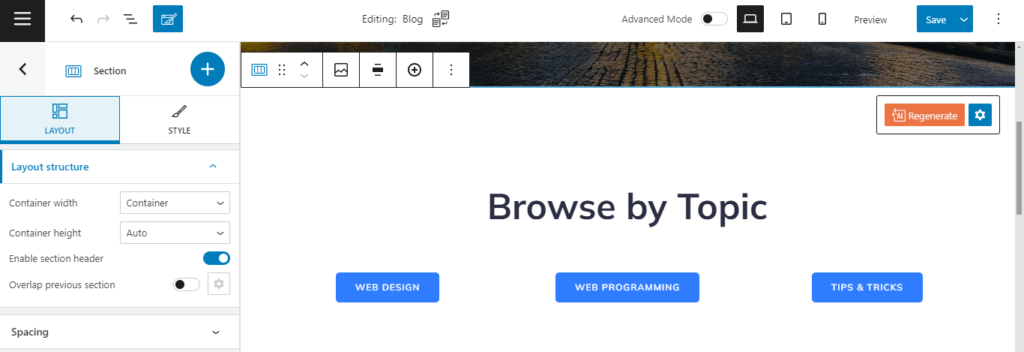
- Link buttons to corresponding categories
- For each button, link it to the blog page for the corresponding category.
- For example, if you have a food blog with a “Recipes” category, link the button to [yousitename].com/category/recipes.
? Note: If using tags instead of categories, replace category with tag in the URL.
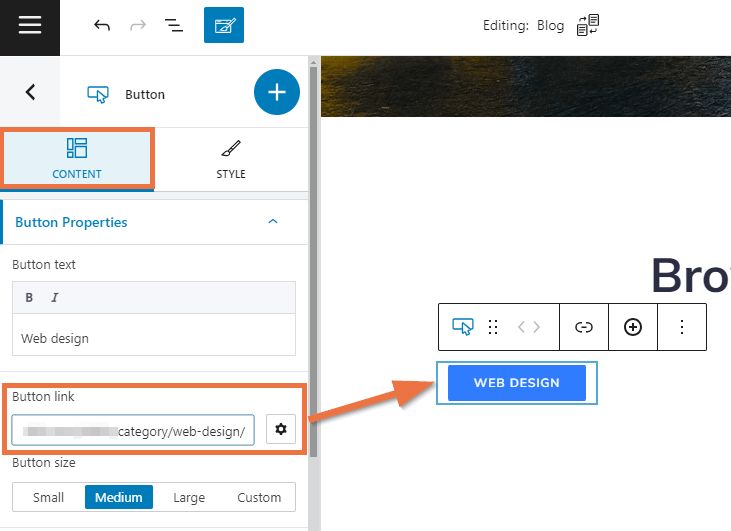
And there you have it.
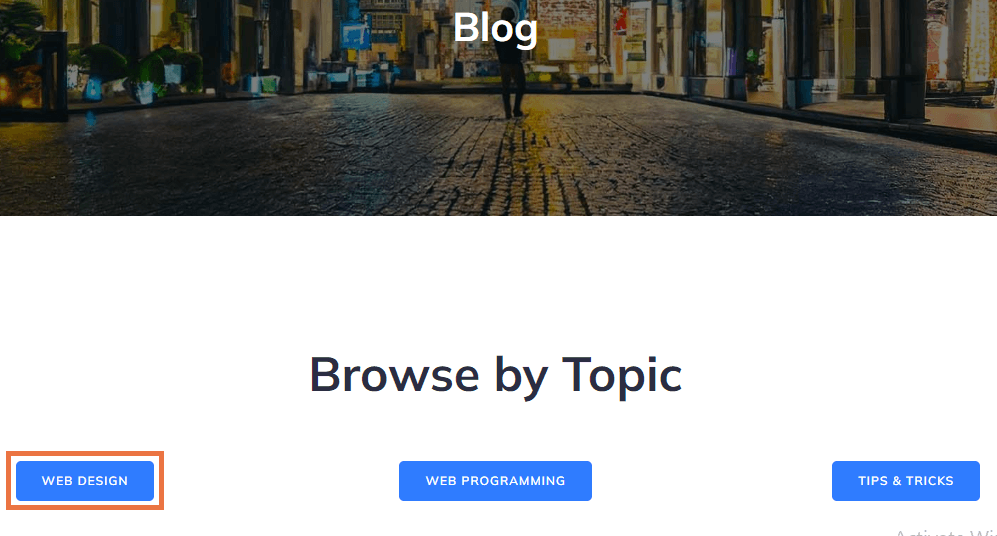

The Web Design category blog page.
? To see this filtering concept in action, explore Kubio’s blog homepage to see all the functions more clearly!
Blog-filtering plugins
Sometimes, the default method of organizing and structuring a blog to make it user-friendly may not be optimal or suitable for specific needs or preferences. But don’t worry; there’s a great alternative, like blog-filtering plugins.
There are so many blog-filtering plugins available in the market, each with its own set of features. As you start the process of choosing the perfect one for your website, it’s important to conduct thorough research. Take into account not only the specific requirements of your blog but also other sections of your site that could benefit from categorization, like the products in an online store.
Numerous WordPress filter plugins go beyond the blog section and offer versatility for different purposes. These plugins can integrate with WooCommerce, for example, enabling you to provide customers with an effortless way to sort through products.
When comparing filtering plugins, there are several factors to keep in mind:
- Customizability: Look at how easily you can customize the filter settings to match the look and feel of your website. It’s important to check if the plugin is compatible with block-based editors.
- Functionality: Give the plugin’s demo a try to assess its user-friendliness and comprehensibility. Ask yourself, does it deliver the desired results with efficiency and precision?
- Popularity: While popularity doesn’t guarantee top performance, it can give you an idea of which plugins are relatively trustworthy. Just be cautious of fake or purchased reviews.
- Price point: Keep your budget in mind when choosing a plugin. Many filtering plugins offer a free version, but you might need to upgrade to a paid plan for more advanced features.
? Give your blog a design boost with Kubio
If you’ve reached the point where implementing a blog filter becomes necessary, you should be proud! This is a sign of your blogging success.
With Kubio, not only can you streamline the process of creating a blog filter, but also effortlessly edit your entire site using a single interface. It’s the design boost you’ve been searching for to keep your content organized, engage your readers, and ensure effortless navigation on your site.
Don’t just meet your readers’ expectations; exceed them with Kubio’s user-friendly tools today!


